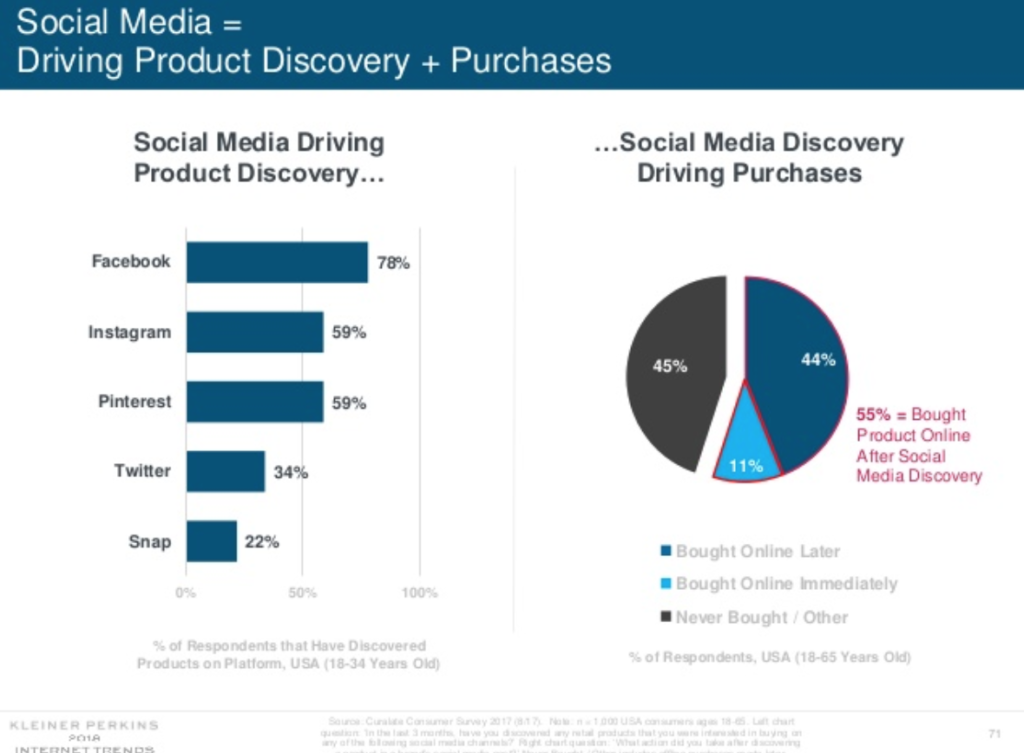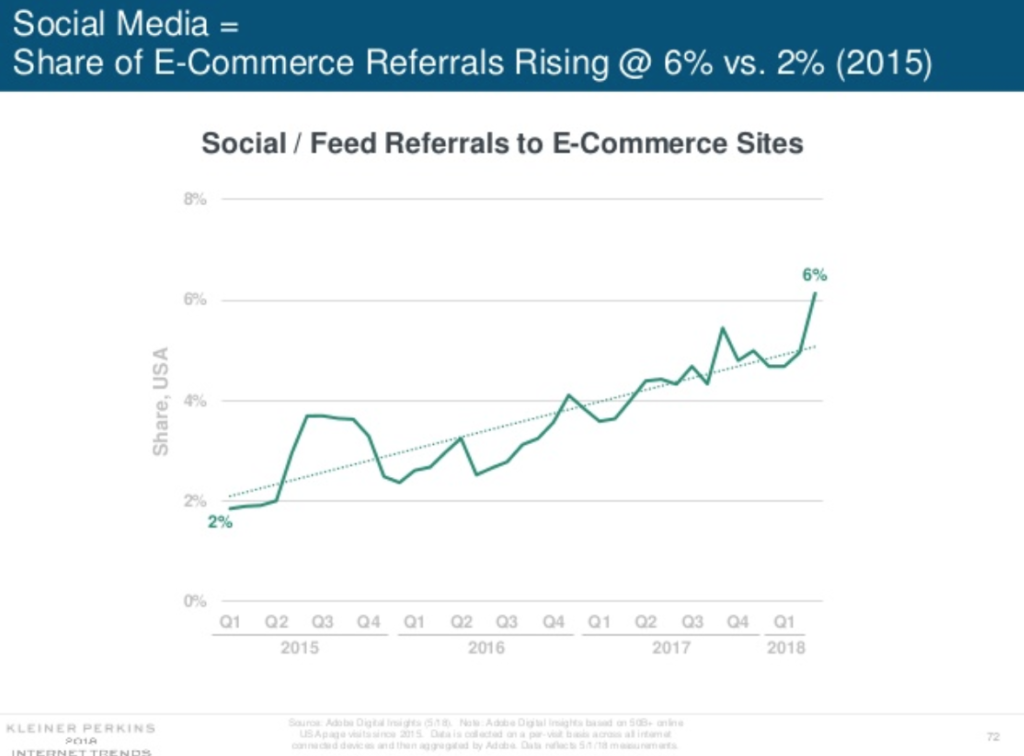Moving into an experience-based economy means that the average shopper is looking for more than, say, a good quality lipstick. There’s a reason why brands like Glossier — known for its painstaking focus on customer preferences, Instagram-worthy pop-up shops, and perfect product packaging — are steadily climbing to the top of of the industry.
The shift toward customer experience has become a cultural phenomenon. Entire YouTube channels are dedicated to unboxing elaborately packaged products. Influencers are constantly sharing images of their favorite #sponsored yoga pants as they meditate in solitude on a beach in Bali.
Anything less than a FOMO-inducing brand lifestyle and personalized purchase experience makes it tough to compete in a world where consumers are buying virtually everything on Amazon.
In fact, according to the 2018 Kleiner Perkins Internet Trends Report, Amazon’s share gains are up 28% versus 20% in 2013, as increasingly more shoppers turn to the eCommerce giant at the search stage of their purchase journey.
When consumers are paying for an intangible benefit — the way a new outfit makes them feel, the brand lifestyle it denotes, or the incomparable ease of a subscription box arriving on their doorstep — there’s really only one way to sell it: through the experiences of other shoppers.
In the years since the first customer reviews appeared online, other forms of user-generated content, including customer photos, videos, Q&A, and commenting, have exploded onto the scene. It’s no longer a question of whether you have customer content on site, but how much and how effective it is at conveying your competitive experience.
The impact of UGC
The brilliant brands, the ones that have been thriving and building cult communities of loyal customers, are using that customer-created content to form the core of their brand. Successful brand-building in today’s experience economy is dependent on broadcasting authenticity through the customer voice.
Customer reviews are uniquely capable of sharing a past customer’s thoughts and feelings while using a product. Similarly, a customer photo can convey the confidence felt while wearing a new dress, or the feeling of wearing that dress to a close friend’s wedding, whereas a branded image falls short at conveying those feelings in a relatable way.
The consensus, especially among the millennial segment, is that brands can’t be trusted. For these younger consumers, who are rapidly overtaking Baby Boomers in terms of purchase power, peer-to-peer recommendations have become more important than ever.
In fact, 42% of millennials report being unable to go more than five hours without checking social media. In other words, they’re constantly exposed to digital content and recommendations from friends and influencers. This connectedness has further entrenched a trust of peers and authentic content over brands.
Social-savvy browsers curate their online journey to see only the content that is meaningful to them. And as we saw in the Kleiner Perkins Report, that curated journey can and does include eCommerce product discovery and shopping.
Fifty-five percent of social media users have purchased a product discovered on social, and that number is only going to rise as consumers continue to buy from the brands that their peers vouch for.


For a brand to become a welcome part of this new online journey, they need to leverage user-generated content. Since a genuine product review closely resembles a friendly recommendation, and an aspirational customer photo could easily have been taken by a colleague, these types of content blend into users’ newsfeeds. They also manage to attract attention from banner-blind consumers who are used to scrolling right past branded ads.
Building experience-based communities
Beyond the traffic and the ability to blend into newsfeeds, sharing authentic customer experiences online creates a conversation around your brand. When enough people are talking to each other about a brand — whether it’s how easy their website is to use or their latest product line — it creates a sense of community.
In an article about direct-to-consumer luggage brand Away, one blogger illustrated this phenomenon perfectly, writing: “When I mentioned suitcases to my friends, it seemed like everyone already knew about ‘that suitcase that charges your phone.’
We were all kind of goading each other into upgrading our suitcases, as you can see from this conversation.”

Conclusion
Providing memorable, personalized, and brand-right experiences is the best way to get noticed and develop a fanbase that won’t ditch your site for Amazon. However, capitalizing on the most authentic and effective way to publicize and monetize those experiences, namely UGC marketing, is the only opportunity to gain traction in a crowded ecosystem.
Consumers’ need for authentic information about experiences with brands and products plays into our natural tendency as human beings to share our stories. Working with that tendency is the surest way to succeed as a brand in the experience economy.


